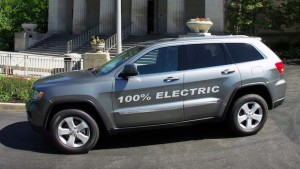Good Things Happening All at Once in Clean Energy, Transportation

And speaking of EVs, this is another perfect example. There are almost 500,000 electric vehicles in the US, but only 14,349 electric vehicle charging stations. Yet this problem is in the process of taking care of itself, as ranges get better, and more fast-charging stations are being built each month.
Currently, most electric vehicle owners charge their EVs at home, many with solar PV installed for this precise purpose.
It really is happening.

Craig, I thought the number you quoted for “charging stations” seems rather small so I checked the article you cited where it is clear that this refers to public charging stations. Taxi and private companies that install their private charging equipment would not be included. Nor would charging facilities installed in private garages.
I wonder if we are collectively suffering under a kind of old system shock where we are inclined to compare vehicle charging to the number of gas stations. I suspect there are many people who would like never to charge their vehicle in public and perhaps one reason for early adoption is that they could travel from home with a charged vehicle and return to the security and comfort of their home without having to stop at a gas station or a public charging station.
After this, public charging stations will make electric vehicle use much easier for those with apartment dwellers and those who for whatever reason have no at home charging. Presently for those people there is also this site that lists hundreds of locations where private owners will allow public charging: http://www.plugshare.com/
Excellent. Thanks very much.
Breath,
You beat me to it and raised the same question I had, i.e., about not counting home charging facilities as charging stations. In the olden days, some large homes had a large gasoline tank and pump in the garage since there were few gasoline stations.
At least one new luxury apartment building here in Albuquerque, NM, has EV recharging facilities. Where apartments, condominia, homes, etc., have off-street parking, it usually is not difficult to add EV recharging facilities. I wonder whether those employees which have EV charging facilities are counted. Any place where cars stop for considerable periods are good places to add charging facilities, such as restaurants (except fast food!), shopping malls, cinemas, etc.
Frank, perhaps I was a bit too quick. I noticed in re-reading the article that Craig did later mention home charging in the article.
Yes, he does, but not counted in the number of charging stations.
Most people, most of the time, could probably usually get by with only home charging. However, it would be rather irksome to realize that if there were some reason to go farther occasionally, there would be problems. When we buy cars, we want one that will satisfy all of our transportation needs, not just 90% of them. For example, someone living in Manitowoc, WI, might want to drive 180 miles to Chicago occasionally for shopping, to visit museums, watch a Chicago Cubs game, or whatever. That would make it very tempting to buy car with no range problems to avoid having to deal with renting a car or using public transportation.
Adequate public charging stations could solve the problem if they were well located. For example, in driving from Manitowoc to Chicago, they could stop for lunch in Milwaukee and charge the car while eating lunch. Then, in Chicago, they could leave the car on charge at a hotel. With a range of perhaps 150 miles, that could easily be done with enough well located public charge stations. But most of the time, cars would be charged at home.